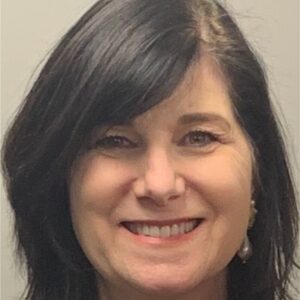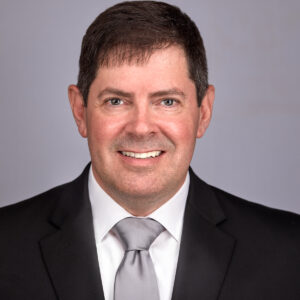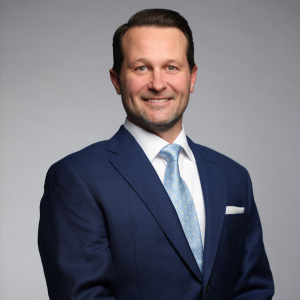Quality Close-Up: Stories From Three Administrators
| Quality close-up STORIES FROM THREE ADMINISTRATORS BASED ON INTERVIEWS BY RICHARD L. PECK, EDITOR-IN-CHIEF, JASON STAHL, ASSOCIATE EDITOR; AND TODD HUTLOCK, ASSISTANT EDITOR |
| Former Health and Human Services (HHS) Secretary Tommy Thompson had a surprisingly quiet tenure in that position, some would say, considering his record of achievement as governor of Wisconsin. Other Bush administration first-term cabinet members received more media coverage, and more credit for initiative, than he did. Some would argue, though, that very subtly he pulled off a major coup: a transformation of quality improvement in nursing homes. The Nursing Home Quality Initiative used Quality Improvement Organizations (QIOs), which had been serving as government monitors of medical care quality for some 30 years, to teach nursing homes how to use some newly developed Quality Measures. While the early progress of this initiative escaped major media attention, Thompson’s virtual “swan song” as HHS secretary was to pay tribute to the work of the 50-plus QIOs in achieving dramatically measurable results in nursing home restraint reduction and pain relief. Although the process is viewed by some as quality improvement taken at a snail’s pace-only some 10 to 15% of nursing homes have been directly involved, with best practices expected to move by a sort of osmosis from “good” to “poor” performers-double-digit percentage improvements occurred in participating facilities within only a couple of years. (The fact that improvements of such magnitude remain achievable after 15 years of the state survey system tells a story in itself.) Recently, Nursing Homes/Long Term Care Management turned to its local QIO, Ohio KePro, to get the stories of some of its “star performers.” We asked administrators to discuss the experiences, motivations, and explanations behind their quality improvement success stories. Their comments follow. Mark Beggs, Executive Director, Eliza Jennings Community, Cleveland At Eliza Jennings, a 150-bed facility, we’ve been able to reduce the number of residents with pain by 78% and pressure ulcer incidence by 84% since 2002. And we are completely restraint-free. We began our process of attacking these clinical areas even before KePro was created. When KePro began, we found that they were aligned with the areas that we already thought were important, and it was good to have an additional resource to work with through our process development. Several factors ultimately contributed to our success:
2.Developing systems that work for our approach. For example, we have permanent care teams consisting of representatives of therapy, housekeeping, dietary, and nursing assistants for each of our households-in short, everyone who comes in contact with a resident’s care. By bonding each team together over critical areas, we find they can develop standards that they want to achieve and, as a result, the goals become important to every member. 3.Real-time information and opportunities to educate and train staff, such as weekly rounds for wounds and falls. With wounds, we have a weekly review of every resident at risk conducted by our full-time nurse practitioner (NP), as well as a contract NP, and attended by the relevant hands-on staff. By the way, we also try to keep residents as active as possible, with some doing daily workout routines; about one-third of our residents have a personal trainer through our on-site wellness program. With falls, our approach does not focus only on preventing falls, but on ways to increase resident independence safely, with staff focusing on each resident’s situation. 4.Ongoing education of staff about the importance and impact of different areas of care (not only pain, pressure ulcers, and restraints, but medication levels, behaviors, dementia care, nutrition, and end-of-life issues, to name a few). Our education is done as a team, with everyone feeling that he/she is learning from each other and contributing. It’s important that staff realize and acknowledge each member’s expertise and contribution because it creates an environment where everyone feels valued. 5. Frequent praise of staff and sharing of outcome information, so that staff can see and appreciate the results of their hard work. More specifically on training, it is provided to our staff in many forms. Around dementia care we developed a two-day training program called Magnolia, which encompasses all aspects of care delivery within our organization. Every employee, from the receptionist to the beautician to the CEO, is required to go through this training to better understand our residents and how to deliver care and provide them with an exceptional quality of life. As mentioned, our NP is available on-site and provides education through the daily process of giving clinical care and guidance to the nurses and nursing assistants, and our medical director provides staff with regular education on a wide variety of topics, using helpful data he has put together. We also take advantage of external educational resources; KePro, in particular, is invaluable with teleconferences that allow our staff to receive low-cost, high-quality training without leaving our community. All of this is presented in a “blame-free” format, with an interest not in pointing fingers, but in educating staff. We’re very fortunate that this has had an impact on staff retention. Not only has our community been agency-free for almost three years, the longevity of our staff is improving dramatically. We have some staff who have been here for years (a couple since I was born), but beyond that we’ve seen a 10% drop in overall turnover this fiscal year, down to 27%. This is probably attributable to many factors, but philosophically we believe that our staff know best how to do their work and that they should be afforded the respect and power they deserve and need. Moving toward a culture change environment, with self-directed work teams and opportunities for personal and professional growth, is another critical factor in creating an environment to which staff are proud to commit themselves. One area in which we could definitely improve is in raising public awareness of our facility and its accomplishments. We believe we are one of the best kept secrets in our industry. We do provide information in our organizational newsletters that go out monthly to staff, families, and professionals in the community. And we created a director of public relations position. So, in general, we’re hoping to better tell our story and educate others on the approach we take as an organization with regard to clinical care and culture change. Also, as an overall mission, we want to work more toward educating the general public about important issues surrounding seniors care. As for our next quality-improvement goals, resident quality-of-life initiatives are very important. Although we can document that we give quality care in measurable ways, we want our residents to have a great life, enjoy the comforts of home, live life as productively as possible, enjoy every day and life’s simple pleasures, have a great night’s sleep, get up when they want, have a meal when they want, and go about their day as would any normal human being. Much of this is, of course, virtually unheard of in the typical nursing home setting, and getting there is a real challenge in training and organizing staff. But we’re working on it. For further information, please contact Mark Beggs at mbeggs@elizajen.org or (216) 226-0282 or Barb Gerber, Director of Public Relations, at bgerber@elizajen.org or (216) 226-5000, ext. 247. Kim Thorp, Director of Nursing, Trinity Community of Beavercreek At Trinity Community, a 106-bed home in Beavercreek, Ohio, we’re proud of our numbers: a 67% decline in pain for chronic care residents and 28% for post-acute residents, a 64% decline in the pressure ulcer rate, and a 55% decline in the use of physical restraints. But we’re not ready to relax just yet. Once we meet a goal we want to make things more stringent to better that goal. The Ohio Department of Health expects action to be taken at a 5% weight loss. We begin implementing new interventions at a 3% weight loss-or gain. We shoot for a fall rate of less than 30%, even though some facilities would say that’s unheard of. We also pull QIs every week, while some only pull them every quarter. But our impressive numbers are a result of more than just shooting for lofty goals. It’s from taking a whole team approach rather than advocating a hierarchical structure within the organization. Look at risk management, for instance: We involve everybody, including the frontline staff, the high-level staff, and the administrator. It also involves intensive staff training of all kinds-videotapes, speakers, staff meetings, return demonstrations, fairs, and all-day seminars. That’s just one reason our employees stay motivated to keep reaching and exceeding important Quality Measures. The other is the variety of events we hold for them, including cookouts, talent shows, and ice cream parties. Any type of party we do for the residents, we also do for the staff. We even occasionally have the managers cook meals, which staff get a real kick out of watching. Recognition, free uniforms, competitive wages, and an open-door policy with management help to keep our employee turnover rate low, as well. When employees are hired, they receive a feedback form within 60 days and are asked how coworkers are dealing with them, whether their supervisors have been accessible, etc. We also do confidential staff evaluations and ask them about their job satisfaction and how they feel the lines of communication have worked for them. The end result is a team that understands that the only way to improve the quality of care for their residents is to embrace education and accept rigorous systems that ensure consistency of service. For example, we mandate that every department use the same agenda for department meetings, whether it be for employee recognition, housekeeping, infection control, or safety. And we also document all those meetings. When our staff hits its quality-improvement measures, we make sure to let the community know about it. A facility newsletter and Web site ensure that the staff’s achievements don’t go unnoticed. We also host family and resident meetings to share information, as well as family care conferences to address families’ concerns and update them on how their family members are doing. People can visit our Web site and see our results-in fact, there are so many other avenues to see how we’re doing other than just walking in our door. And I think this is one of the reasons we have a 99-100% occupancy rate. For further information, phone (937) 426-8481. Sister Raphael Gregg, RN, Administrator, Mount Saint Joseph, Euclid Since 2002, Mount Saint Joseph’s rate on the Nursing Home Compare Web site [www.medicare.gov/nhcompare/home.asp] for chronic care pain declined by 85%, and for post-acute pain by 77%. Quality Measure scores also improved by 35% for use of restraints, and by 9% for incidence of pressure ulcers. I think the key to our success rates is having a system in place that everyone understands and providing in-services on areas of concern to all staff. Staff are aware when there is a concern there and assume responsibility for addressing it. Most of the information we used with staff came from Ohio KePro. They’ve been our springboard. Staff are encouraged to be proactive about what they learn, and there is ongoing education. When there is a concern with a restraint problem, for instance, we will ask the staff member: What type of restraint do you think the resident needs? What is the least restraint we could use? What behavior do you see that warrants a restraint? These questions are raised when the situation arises. It may be that the resident is leaning forward or to the side in a chair, or the resident may not know his or her safety boundaries and try to walk when unable to do so. Education and in-services are ongoing after the initial in-services are provided to the staff by the DON, staff development person, or unit supervisors. A mini’-in-service may be held when direction is needed or some positive reinforcement is desired. Much of this is shown to new employees during the orientation program through both verbal and written instruction, followed by ongoing education on the job. Our nurses meet with our frontline staff at least once a week for a mini’-in-service. The nurses ask how things are going, what can they do to improve certain areas, whether techniques that work well on one resident might work well on someone else, etc. We monitor staff’s ongoing performance with resident assessment forms and documentation. We hold quality-of-life meetings weekly that are multidisciplinary and these topics are discussed, especially pain, restraints, pressure ulcers, or any other areas we are monitoring. We also have daily clinical rounds and make it a point to involve staff and keep them proactive with assessing situations and finding solutions to problems. Of course, we have protocols in place for pain, pressure ulcers, and restraints, and make it a point to continually ask questions such as: Are you following the protocol? What are you doing, if not? Is it in the TARS? Are you documenting your actions in the nurses’ notes? Are they on the nurses’ aide assignment sheet? So it comes back to us having our system in place and then taking steps to make sure that system is continually implemented. Staff turnover is our greatest challenge, and so covering things clearly in our orientation is important. We also benefit from having mentors or preceptors for new employees. The mentors/preceptors are chosen from among the staff based on longevity and the ability to follow the protocols that are in place and convey this to new employees in a gentle but firm manner. We also have a “town hall” meeting once a month, in which I bring up issues that involve all the staff. I feel that issues such as pain, restraints, and falls are the responsibility of every staff member in the facility. For example, if a staff member sees someone walking unsteadily, he or she has a responsibility to report that to a supervisor. We make it a point to see that all staff are aware of these things, even activities and housekeeping staff. We get the word out about our achievements through our regular Family Nights, in which issues are brought up and discussed openly. Family Nights are held quarterly. People are informed of these nights through distributed flyers and our monthly newsletter, which goes out to staff, families, and even some former residents, as well. We usually have a speaker on a subject that has been raised by a family member or resident ahead of time. We also make other announcements at the meeting, along with an open question-and-answer period. Also, on a one-on-one basis, we make sure to tell the family if we have a concern about a resident. For instance, if a resident has a pressure ulcer, we tell the family about it; we also make it a point to tell them when it is healed and the steps we took to eliminate it. We make it a point not just to report the problem to the family members, but also the success. This applies to pain management, changes in medication, and so forth. In the future, we will continue to monitor and reassess the systems we have in place, making sure they are current and working for us. And, of course, if Ohio KePro comes out with a new quality-improvement measure, we will likely jump on the bandwagon. Their structure and support gave us the foundation to start our efforts, and they helped us establish a checks-and-balances system that really helps us stay on top of things. We monitor, we assess, and we tweak the system where it needs to be tweaked. I am very pleased to be recognized as having had success and made significant improvements in our facility, and it is great to have all of our hard work acknowledged. For more information about Mount Saint Joseph, call (216) 531-7426 or fax (216) 531-4033. To send your comments to the editors, please e-mail 2peck0505@nursinghomesmagazine.com. To order reprints in quantities of 100 or more, call (866) 377-6454. |
I Advance Senior Care is the industry-leading source for practical, in-depth, business-building, and resident care information for owners, executives, administrators, and directors of nursing at assisted living communities, skilled nursing facilities, post-acute facilities, and continuing care retirement communities. The I Advance Senior Care editorial team and industry experts provide market analysis, strategic direction, policy commentary, clinical best-practices, business management, and technology breakthroughs.
I Advance Senior Care is part of the Institute for the Advancement of Senior Care and published by Plain-English Health Care.
Related Articles
Topics: Articles , Facility management , Leadership











